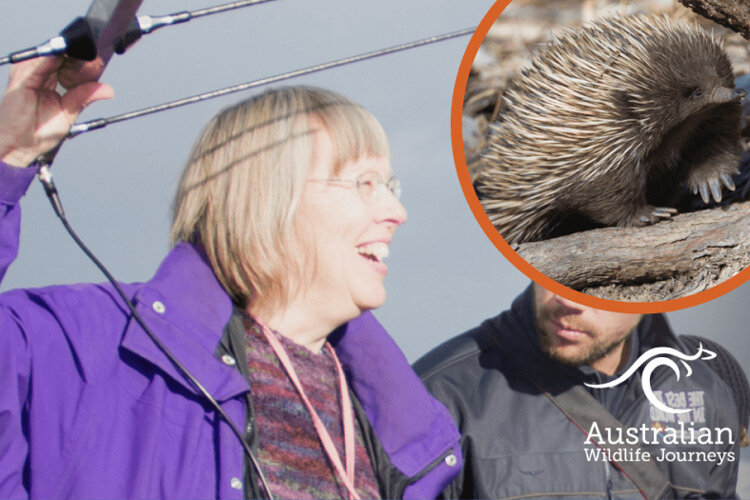Take A Bushwalk On Kangaroo Island With World Echidna Expert Dr Peggy Rismiller
When you join world expert echidna researcher Dr Peggy Rismiller (OAM) for a bushwalk, it’s no ordinary stroll. “I’ve been working with Short-beaked Echidnas since 1988, so I know a thing or two about them,” she laughs. “But there is still so much I’d like to find out.”
The egg-laying echidna represents the world’s longest surviving mammals (their ancestors roamed the planet with the dinosaurs), yet there is still a lot to learn. “Back in 1834 Sir Richard Owen, founder of the British Museum, posted seven basic questions about their biology, and when I started my research work in 1988 only one of those seven questions had been answered,” Peggy says, adding that although she has found answers to his other six questions, she has also come up with many more. “Echidnas are very solitary and elusive creatures,” she says. “And it has taken years to unravel key facts about these mysterious animals.”
When Exceptional Kangaroo Island guests tag along with Peggy, she chats about living and working in the wild with echidnas and shares many fascinating facts she has learnt over the years, spanning everything from their mating and breeding habits to their love of travelling great distances and their unexpectedly diverse diet. “They are often on the move and are consequently very challenging to track,” Peggy says. “The peninsula area we work in is 15 km2, and it took us 10 years to work out there are 40 to 45 resident individuals. You need patience when working with wild echidnas.”
Peggy stresses, too, that a bushwalk with her doesn’t necessarily equate to always seeing an echidna. “I take Exceptional Kangaroo Island guests to the habitat where you would normally find them,” she says. “We often discover echidna digs – and these are distinctly different from goanna and kangaroo digs. We might find an echidna scat. And there are times we have one-on-one prime time with the elusive echidna.”






